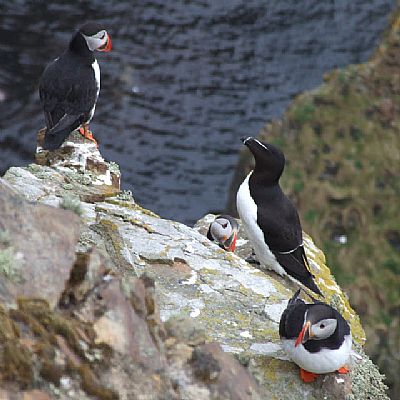Seabirds
Fair Isle is home to an internationally important population of breeding seabirds, with over 250,000 birds of 18 different species nesting on the isle.
Each year since 1986, Fair Isle Bird Observatory has been carrying out a detailed annual Seabird Monitoring Programme funded by the Joint Nature Conservation Committee (JNCC).
In addition to the above activities, Fair Isle Bird Observatory now also employs new seabird monitoring and research techniques to learn more about the birds' breeding ecology and foraging/feeding behaviour. More information about this can be found on the Fair Isle Bird Observatory website.

Fair Isle Seabird Reports for JNCC can be found in the Fair Isle Bird Observatory's Annual Reports.
Fair Isle Bird Observatory’s long run of seabird monitoring data going back to 1969 is available to view on the JNCC website.
(The following information is courtesy of Fair Isle Bird Observatory Annual Reports. All photographs are Copyright Deryk Shaw/Fair Isle Bird Observatory.)












